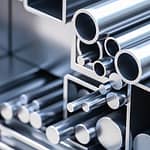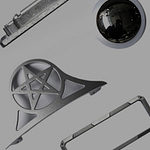Differences Between Casting and Die Casting
Explore the distinctions between casting and die casting processes in metal manufacturing. Casting involves pouring molten metal into molds like sand, ceramic, or metal, suitable for large and complex parts.
Die casting, utilizing high-pressure injection into hardened steel dies, excels in producing high-precision, smooth-surfaced parts for industries such as automotive and electronics.
Casting and die casting are widely used manufacturing processes for producing metal parts but differ significantly in their processes, costs, applications, and outcomes. Here’s a detailed comparison:
Process Principles
Casting:
- Process: Metal or alloy is melted in a furnace and then poured into a mold where it cools and solidifies into the desired shape.
- Types of Casting:
- Sand Casting: Uses a sand mold, suitable for large parts with complex geometries.
- Investment Casting: Uses a wax pattern covered with a ceramic shell, suitable for intricate and detailed parts.
- Permanent Mold Casting: Uses a reusable metal mold, suitable for medium to high-volume production.
- Centrifugal Casting: Uses centrifugal force to distribute the molten metal, suitable for cylindrical parts.
- Molds: Often made from sand, ceramic, or metal, depending on the type of casting process.
Die Casting:
- Process: Metal or alloy is melted and injected into a mold (die) under high pressure. The metal solidifies quickly due to the rapid cooling by the metal die.
- Types of Die Casting:
- Hot Chamber Die Casting: Suitable for metals with low melting points, such as zinc, magnesium, and lead.
- Cold Chamber Die Casting: Suitable for metals with high melting points, such as aluminum, brass, and copper.
- Molds (Dies): Made from hardened tool steel and designed for high-volume production.
- Production Costs
Casting:
- Cost Factors: Generally lower initial investment in molds (except for permanent molds) and equipment.
- Operational Costs: Lower compared to die casting, but can vary depending on the complexity and size of the part.
- Tooling: Less expensive molds that can be reused, though sand and investment casting molds are typically single-use.
Die Casting:
- Cost Factors: Higher initial investment due to the need for high-precision steel dies and sophisticated machinery.
- Operational Costs: Higher due to the energy required for high-pressure injection and the maintenance of dies.
- Tooling: Expensive, precision-engineered dies that can produce tens of thousands to millions of parts.
- Application Ranges
Casting:
- Applications: Suitable for a wide range of parts, including large, complex components such as engine blocks, pump housings, and sculptures.
- Advantages: Can produce huge parts, accommodate complex geometries, and use a variety of metals and alloys.
- Limitations: Not ideal for high-precision parts, and surface finish and mechanical properties may be less consistent.
Die Casting:
- Applications: Preferred for high-precision, high-volume production of parts such as automotive components, electronic housings, and consumer goods.
- Advantages: Excellent dimensional accuracy, smooth surface finishes, and the ability to produce thin-walled parts.
- Limitations: Limited to smaller parts due to the size constraints of the die casting machines and higher production costs.
- Material Considerations
Casting:
- Materials: Can use a wide range of metals, including iron, steel, aluminum, bronze, and brass.
- Flexibility: More versatile in terms of the types of materials that can be used.
Die Casting:
- Materials: Typically uses non-ferrous metals like aluminum, zinc, and magnesium due to their ability to be injected under high pressure without damaging the dies.
- Material Properties: Produces parts with good mechanical properties and high strength-to-weight ratios.
- Quality and Precision
Casting:
- Precision: Lower precision compared to die casting, with tolerances generally wider.
- Surface Finish: Can be rough and may require additional machining or finishing processes.
- Defects: Prone to defects like porosity, shrinkage, and inclusions.
Die Casting:
- Precision: High precision with tight tolerances, making it suitable for parts requiring detailed and consistent specifications.
- Surface Finish: Typically smooth, often requiring minimal post-processing.
- Defects: Less prone to defects, but can suffer from issues like flash, cold shuts, and gas porosity if not properly managed.
Casting Vs Die Casting: Advantages, Disadvantages
Both casting and die casting have advantages and disadvantages. The choice between the two depends on the required precision, production volume, material choice, and cost constraints. Casting is more versatile and cost-effective for large or complex parts, while die casting is preferred for high-volume, high-precision parts with superior surface finishes.














No comment